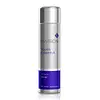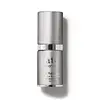What's inside
What's inside
 Key Ingredients
Key Ingredients

 Benefits
Benefits

 Concerns
Concerns

 Ingredients Side-by-side
Ingredients Side-by-side

Water
Skin ConditioningGlycerin
HumectantPEG-40 Hydrogenated Castor Oil
EmulsifyingPentaerythrityl Tetraisostearate
EmollientPanthenol
Skin ConditioningC12-15 Alkyl Benzoate
AntimicrobialButylene Glycol
HumectantPalmitoyl Oligopeptide
CleansingPalmitoyl Tetrapeptide-7
Skin ConditioningAcetyl Hexapeptide-8
HumectantTribehenin
EmollientCeramide Ng
Skin ConditioningPEG-10 Phytosterol
EmulsifyingPalmitoyl Hexapeptide-12
Skin ConditioningTocopheryl Acetate
AntioxidantAcrylates/C10-30 Alkyl Acrylate Crosspolymer
Emulsion StabilisingAscorbyl Tetraisopalmitate
AntioxidantDisodium EDTA
Helianthus Annuus Seed Oil
EmollientRosmarinus Officinalis Leaf Extract
AntimicrobialGlycine Soja Oil
EmollientRetinyl Palmitate
Skin ConditioningTocopherol
AntioxidantCarbomer
Emulsion StabilisingPolysorbate 20
EmulsifyingCaprylyl Glycol
EmollientPhenoxyethanol
PreservativeEthylhexylglycerin
Skin ConditioningPolyglyceryl-10 Laurate
Skin ConditioningMethylparaben
PreservativeSodium Hydroxide
BufferingPropylparaben
PreservativeLactic Acid
BufferingWater, Glycerin, PEG-40 Hydrogenated Castor Oil, Pentaerythrityl Tetraisostearate, Panthenol, C12-15 Alkyl Benzoate, Butylene Glycol, Palmitoyl Oligopeptide, Palmitoyl Tetrapeptide-7, Acetyl Hexapeptide-8, Tribehenin, Ceramide Ng, PEG-10 Phytosterol, Palmitoyl Hexapeptide-12, Tocopheryl Acetate, Acrylates/C10-30 Alkyl Acrylate Crosspolymer, Ascorbyl Tetraisopalmitate, Disodium EDTA, Helianthus Annuus Seed Oil, Rosmarinus Officinalis Leaf Extract, Glycine Soja Oil, Retinyl Palmitate, Tocopherol, Carbomer, Polysorbate 20, Caprylyl Glycol, Phenoxyethanol, Ethylhexylglycerin, Polyglyceryl-10 Laurate, Methylparaben, Sodium Hydroxide, Propylparaben, Lactic Acid
Water
Skin ConditioningCyclopentasiloxane
EmollientC12-15 Alkyl Benzoate
AntimicrobialPhenyl Trimethicone
Skin ConditioningGlycerin
HumectantCyclotetrasiloxane
EmollientPPG-12/Smdi Copolymer
EmollientTheobroma Grandiflorum Seed Butter
Skin ConditioningCetyl PEG/PPG-10/1 Dimethicone
EmulsifyingDimethicone
EmollientMicrocrystalline Wax
Emulsion StabilisingSodium Chloride
MaskingPolysilicone-11
Acetyl Hexapeptide-8
HumectantCucumis Sativus Fruit Extract
EmollientTribehenin
EmollientCetyl Esters
EmollientSodium PCA
HumectantHydrolyzed Rice Protein
Skin ConditioningCeramide Ng
Skin ConditioningPhospholipids
Skin ConditioningTrehalose
HumectantGlycine Soja Protein
EmulsifyingTocopheryl Acetate
AntioxidantGlycine
BufferingLysine
Skin ConditioningPalmitoyl Hexapeptide-12
Skin ConditioningPalmitoyl Tripeptide-1
Skin ConditioningPalmitoyl Tetrapeptide-7
Skin ConditioningAscorbyl Palmitate
AntioxidantPEG-10 Phytosterol
EmulsifyingRetinyl Palmitate
Skin ConditioningProline
Skin ConditioningButylene Glycol
HumectantDimethiconol
EmollientEthylhexyl Cocoate
EmollientPEG/PPG-18/18 Dimethicone
EmulsifyingUrea
BufferingEthylhexylglycerin
Skin ConditioningCaprylyl Glycol
EmollientCarbomer
Emulsion StabilisingHexylene Glycol
EmulsifyingDipeptide Diaminobutyroyl Benzylamide Diacetate
Skin ConditioningHydrogenated Lecithin
EmulsifyingHydroxycetyl Hydroxyethyl Dimonium Chloride
Polysorbate 20
EmulsifyingSuperoxide Dismutase
AntioxidantXanthan Gum
EmulsifyingSalicylic Acid
MaskingSorbic Acid
PreservativeCitric Acid
BufferingLecithin
EmollientGlycosphingolipids
EmollientPhenoxyethanol
PreservativeSodium Benzoate
MaskingPotassium Sorbate
PreservativeSodium Dextran Sulfate
Gel FormingPentaerythrityl Tetra-Di-T-Butyl Hydroxyhydrocinnamate
AntioxidantWater, Cyclopentasiloxane, C12-15 Alkyl Benzoate, Phenyl Trimethicone, Glycerin, Cyclotetrasiloxane, PPG-12/Smdi Copolymer, Theobroma Grandiflorum Seed Butter, Cetyl PEG/PPG-10/1 Dimethicone, Dimethicone, Microcrystalline Wax, Sodium Chloride, Polysilicone-11, Acetyl Hexapeptide-8, Cucumis Sativus Fruit Extract, Tribehenin, Cetyl Esters, Sodium PCA, Hydrolyzed Rice Protein, Ceramide Ng, Phospholipids, Trehalose, Glycine Soja Protein, Tocopheryl Acetate, Glycine, Lysine, Palmitoyl Hexapeptide-12, Palmitoyl Tripeptide-1, Palmitoyl Tetrapeptide-7, Ascorbyl Palmitate, PEG-10 Phytosterol, Retinyl Palmitate, Proline, Butylene Glycol, Dimethiconol, Ethylhexyl Cocoate, PEG/PPG-18/18 Dimethicone, Urea, Ethylhexylglycerin, Caprylyl Glycol, Carbomer, Hexylene Glycol, Dipeptide Diaminobutyroyl Benzylamide Diacetate, Hydrogenated Lecithin, Hydroxycetyl Hydroxyethyl Dimonium Chloride, Polysorbate 20, Superoxide Dismutase, Xanthan Gum, Salicylic Acid, Sorbic Acid, Citric Acid, Lecithin, Glycosphingolipids, Phenoxyethanol, Sodium Benzoate, Potassium Sorbate, Sodium Dextran Sulfate, Pentaerythrityl Tetra-Di-T-Butyl Hydroxyhydrocinnamate
 Reviews
Reviews

Ingredients Explained
These ingredients are found in both products.
Ingredients higher up in an ingredient list are typically present in a larger amount.
Acetyl Hexapeptide-8, commonly known as Argireline or Acetyl Hexapeptide-3, is a popular peptide in skincare. It’s often referred to as a “Botox-like” ingredient because it helps reduce muscle movement.
By relaxing these micro-movements, Argireline may help minimize the appearance of fine lines and wrinkles. That said, it’s not as powerful as Botox, and research on its long-term effectiveness is still limited.
Beyond smoothing, Argireline may also support collagen production. Collagen is the protein that helps keep your skin firm, bouncy, and well-hydrated by strengthening the skin barrier.
So while Argireline isn’t a miracle fix, it can be a helpful addition to a routine focused on both prevention and skin health.
Read more about other common types of peptides here:
Learn more about Acetyl Hexapeptide-8Butylene Glycol (or BG) is used within cosmetic products for a few different reasons:
Overall, Butylene Glycol is a safe and well-rounded ingredient that works well with other ingredients.
Though this ingredient works well with most skin types, some people with sensitive skin may experience a reaction such as allergic rashes, closed comedones, or itchiness.
Learn more about Butylene GlycolC12-15 Alkyl Benzoate is made up of Benzoic Acid and long chain alcohols. It has a low molecular weight.
C12-15 Alkyl Benzoate is an emollient and texture enhancer. Due to its solubility, it is often used in sunscreens to help evenly distribute active ingredients.
As an emollient, C12-15 Alkyl Benzoate helps soften and hydrate your skin. Emollients create a film on your skin that traps moisture within.
This ingredient has been reported to cause eye irritation.
Learn more about C12-15 Alkyl BenzoateCaprylyl Glycol is a humectant and emollient, meaning it attracts and preserves moisture.
It is a common ingredient in many products, especially those designed to hydrate skin. The primary benefits are retaining moisture, skin softening, and promoting a healthy skin barrier.
Though Caprylyl Glycol is an alcohol derived from fatty acids, it is not the kind that can dry out skin.
This ingredient is also used as a preservative to extend the life of products. It has slight antimicrobial properties.
Learn more about Caprylyl GlycolCarbomer is a polymer of acrylic acid. Its main role is to create a gel consistency.
A high amount of carbomer can cause pilling or balling up of products. Don't worry, most products contain 1% or less of carbomer.
Ceramide NG is a type of Ceramide. The NG stands for a sphinganine base.
Ceramides are intercellular lipids naturally found in our skin that bonds dead skin cells together to create a barrier. They are known for their ability to hold water and thus are a great ingredient for dry skin.
Ceramides are an important building block for our skin barrier. A stronger barrier helps the skin look more firm and hydrated. By bolstering the skin ceramides act as a barrier against irritating ingredients. This can help with inflammation as well.
If you would like to eat ceramides, sweet potatoes contain a small amount.
Read more about other common types of ceramides here:
Ceramide AP
Ceramide EOP
Ceramide NP
Ethylhexylglycerin (we can't pronounce this either) is commonly used as a preservative and skin softener. It is derived from glyceryl.
You might see Ethylhexylglycerin often paired with other preservatives such as phenoxyethanol. Ethylhexylglycerin has been found to increase the effectiveness of these other preservatives.
Glycerin is already naturally found in your skin. It helps moisturize and protect your skin.
A study from 2016 found glycerin to be more effective as a humectant than AHAs and hyaluronic acid.
As a humectant, it helps the skin stay hydrated by pulling moisture to your skin. The low molecular weight of glycerin allows it to pull moisture into the deeper layers of your skin.
Hydrated skin improves your skin barrier; Your skin barrier helps protect against irritants and bacteria.
Glycerin has also been found to have antimicrobial and antiviral properties. Due to these properties, glycerin is often used in wound and burn treatments.
In cosmetics, glycerin is usually derived from plants such as soybean or palm. However, it can also be sourced from animals, such as tallow or animal fat.
This ingredient is organic, colorless, odorless, and non-toxic.
Glycerin is the name for this ingredient in American English. British English uses Glycerol/Glycerine.
Learn more about GlycerinPalmitoyl Hexapeptide-12 is a synthetic peptide made with glycine, histidine, lysine, and palmitic acid.
The sequence of this peptide matches that of elastin, a key protein that plays a role in how firm our skin is.
Due to its palmitic acid base, this ingredient may not be fungal-acne safe.
Learn more about Palmitoyl Hexapeptide-12Palmitoyl Tetrapeptide-7 (formerly Palmitoyl Tetrapeptide-3) is a lab-made peptide with anti-inflammatory and skin-repairing benefits. It's made up of four amino acids (glycine, glutamine, proline, and arginine) and palmitic acid (which helps it penetrate skin more effectively).
This ingredient helps reduce inflammation by limiting the production of interleukin-6 (IL-6), a chemical that triggers inflammatory responses, particularly after UV exposure.
Less inflammation = slower collagen breakdown and a longer-lasting, youthful appearance.
Palmitoyl Tetrapeptide-7 also stimulates collagen production and supports a healthier skin barrier.
Over time, this can improve skin firmness, hydration, and reduce the appearance of fine lines. It’s commonly paired with Palmitoyl Tripeptide-1 in the well-known Matrixyl 3000 complex for enhanced anti-aging effects.
This ingredient has been shown to be effective and safe in cosmetic use and you'll typically find it in small amounts (less than 0.01%).
Due to its palmitic acid base, it may not be safe for Malassezia folliculitis.
Read more about other common types of peptides here:
Learn more about Palmitoyl Tetrapeptide-7We don't have a description for PEG-10 Phytosterol yet.
Phenoxyethanol is a preservative that has germicide, antimicrobial, and aromatic properties. Studies show that phenoxyethanol can prevent microbial growth. By itself, it has a scent that is similar to that of a rose.
It's often used in formulations along with Caprylyl Glycol to preserve the shelf life of products.
Polysorbate 20 is made by combining ethoxylation of sorbitan, ethylene oxide, and lauric acid. It is a mild cleansing agent, surfactant, and emulsifier.
As a surfactant, it helps collect dirt and oils for washing. Emulsifiers prevent oils and water from separating.
Polysorbate 20 also adds scent to a product. Since it is made using sorbitol, it has a sweet scent. Sorbitol can also be found in fruits such as apples and peaches.
The lauric acid used to create Polysorbate 20 is often derived from coconuts.
Polysorbate 20 may not be fungal acne safe.
Learn more about Polysorbate 20Retinyl palmitate is a form of retinoid. Retinoids are the superstar class of anti-aging ingredients that include tretinoin and retinol.
This particular ingredient has had a bumpy year with its rise and fall in popularity.
First, Retinyl palmitate is created from palmitic acid and retinol. It is a retinol ester and considered one of the weaker forms of retinoid.
This is because all retinoids have to be converted to Tretinoin, AKA retinoic acid. Retinyl Palmitate is pretty far down the line and has to go through multiple conversions before its effects are seen.
Due to this long and ineffective conversion line, the benefits of Retinyl Palmitate are debated.
Studies show Retinyl Palmitate to help:
Dermatologists say this ingredient is ineffective because it isn't used in high enough concentrations in cosmetics.
This ingredient used to be found in sunscreens to boost the efficacy of sunscreen filters.
The downfall of Retinyl Palmitate was due to released reports about the ingredient being correlated to sun damage and skin tumors.
While there is a study showing this ingredient to cause DNA damage when exposed to UV-A, there is no concrete proof of it being linked to skin cancer. It is safe to use when used correctly.
All retinoids increase your skin's sensitivity to the sun in the first few months of usage. Be especially careful with reapplying sunscreen when using any form of retinoid.
Currently, this ingredient is still allowed in cosmetics all over the world. In Canada, cosmetics must have a warning label stating the product to contain Retinyl Palmitate
Fun fact: This ingredient is often added to low-fat milk to increase the levels of Vitamin A.
Learn more about Retinyl PalmitateTocopheryl Acetate is AKA Vitamin E. It is an antioxidant and protects your skin from free radicals. Free radicals damage the skin by breaking down collagen.
One study found using Tocopheryl Acetate with Vitamin C decreased the number of sunburned cells.
Tocopheryl Acetate is commonly found in both skincare and dietary supplements.
Learn more about Tocopheryl AcetateTribehenin comes from glycerin and behenic acid.
It is used as an emollient, or moisturizer. Emollients form a thin barrier on skin to prevent moisture from escaping.
This ingredient may not be Malassezia folliculitis, or fungal-acne safe.
Learn more about TribeheninWater. It's the most common cosmetic ingredient of all. You'll usually see it at the top of ingredient lists, meaning that it makes up the largest part of the product.
So why is it so popular? Water most often acts as a solvent - this means that it helps dissolve other ingredients into the formulation.
You'll also recognize water as that liquid we all need to stay alive. If you see this, drink a glass of water. Stay hydrated!
Learn more about Water